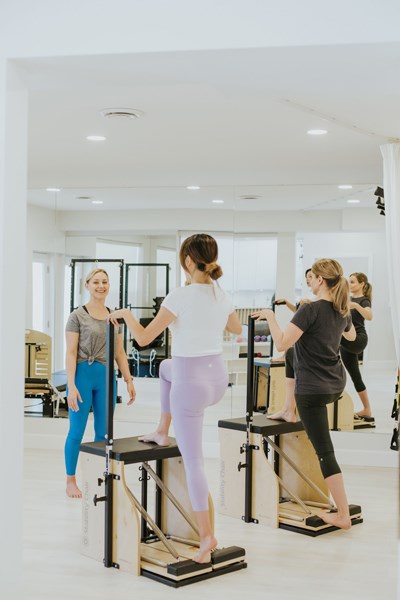Build a solid foundation and you have a sturdy structure.
The same applies for building a healthy body.
Establish a strong set of core muscles, and you have the building blocks for better posture and a more resilient, ache-free frame.
Staff at Inspine Therapy believes the best way to achieve this is through exercise, specifically Pilates training, the type that comes along with dedicated workout equipment and expert guidance, which is offered as part of the rehab program.
“Pilates is a great exercise program for rehabilitation because it helps with mobility, functionality, core stabilization and strengthening. It also offers varying levels of movement from essential, intermediate to advanced to meet the health goals of all clients, from post-rehab to elite athlete,” says Chris Kim, a registered massage therapist and clinic director at Inspine Therapy.
“Pilates is beneficial for a variety of conditions. For example, people who work desk jobs or are sitting for long periods of time will develop tightening and shortening of the muscles, which causes them to slouch. With the help of Pilates core strengthening exercises, patients will experience relief from their lower back and neck pain, as well as improved posture.”
Pilates, which was developed after the First World War to help injured American soldiers’ rehab, uses specialized workout equipment called a reformer to conduct controlled movements. It is one of the safest, most effective movement-based exercises with intention, focus and awareness to connect the mind and body.
In addition, Pilates’s breathing techniques promote effective oxygenation of the blood, focuses the mind on each task and help avoiding unnecessary tension, particularly in the neck, shoulders and mid-back.
“Most clients feel the difference on the body after intro sessions,” Kim says. “Deep breathing is an essential part of Pilates exercise. Incorporating these breathing techniques will bring a natural rhythm to a movement that greatly enhances the efficacy and experience of a workout. Not only that proper deep breathing decreases your sympathetic nervous system but it also increases the parasympathetic nervous system, which produces less of the stress hormone cortisol,” Kim says. “It’s a small change, but it can make a big difference.”
A further benefit of Pilates is that it strengthens all the muscles in your body using a combination of dynamic and static strength training that ensures targeting all the muscles in your body. The best part is that Pilates develop functional strength and endurance which can be applied in your day-to-day life.
It is also extremely beneficial at reducing stress, which is something we could all benefit from.
For more information about how Inspine Therapy can help you achieve the benefits of Pilates, visit inspinetherapy.com or call 604-936-8288.



